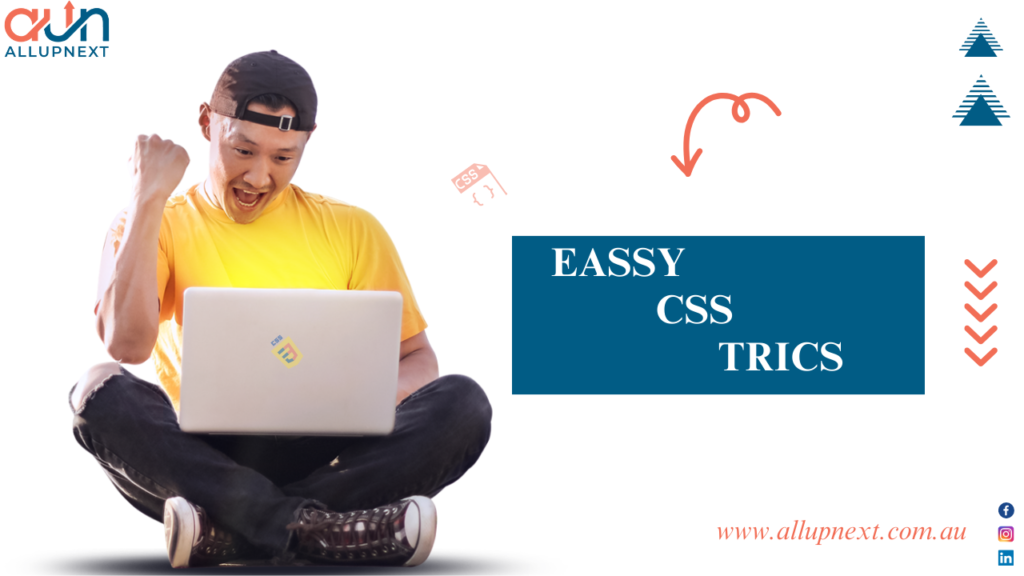Easy CSS Tricks Every Web Designer Should Know for Enhanced Web Design and SEO

In the dynamic world of web design, mastering CSS (Cascading Style Sheets) is a must for creating visually appealing and user-friendly websites. Whether you’re a seasoned designer or just starting out, knowing a few easy CSS tricks can significantly enhance your design capabilities and even contribute to improving your website’s SEO (Search Engine Optimization). In this comprehensive guide, we’ll explore a collection of straightforward CSS tricks that every web designer should have in their toolkit.
1. Responsive Typography with `vw` Units:
Ensuring text remains legible across different screen sizes is crucial. Use the `vw` (viewport width) unit to scale typography based on the user’s device. For instance, setting font size to `2vw` ensures text remains approximately 2% of the viewport width, providing a responsive and consistent reading experience. its very eassy and best css tricks.
2. Box Sizing: Border-Box:
The default CSS box model can cause layout frustrations. By using `box-sizing: border-box;` on elements, padding and borders are included in the specified width, preventing unexpected layout shifts and simplifying responsive design.
3. Flexbox for Effortless Layouts:
Flexbox is a powerful CSS layout model that simplifies the arrangement of elements in a flexible and responsive manner. Use properties like `display: flex;`, `justify-content: center;`, and `align-items: center;` for easy horizontal and vertical centering of content.
4. Gradient Backgrounds:
Adding depth and visual interest to backgrounds is a breeze with gradient backgrounds. Utilize `background-image` property with linear or radial gradients to create vibrant and engaging backgrounds.
5. Custom Fonts with `@font-face`:
Elevate your typography game by integrating custom fonts using the `@font-face` rule. This trick enhances your website’s aesthetics and makes it stand out from the crowd while maintaining SEO-friendly text.
6. Sticky Navigation:
Enhance user experience with a sticky navigation bar that remains visible as users scroll down the page. Use `position: sticky;` to achieve this effect, offering smooth navigation access without overwhelming the layout.
7. Pseudo-Elements for Stylish Accents:
Pseudo-elements like `::before` and `::after` allow you to add decorative elements or content to your design without cluttering the HTML. This trick is excellent for creating separators, quotes, and other design accents.
8. Smooth Transitions: Hover Effects:
Create subtle yet effective interactions by applying smooth transitions to elements on hover. Use properties like `transition` and `transform` to achieve elegant effects that catch the user’s eye.
9. Custom Checkboxes and Radio Buttons:
Customizing form elements like checkboxes and radio buttons enhances the overall design aesthetic. Use the `appearance` property to style these elements to match your website’s look and feel.
10. Using `rem` Units for Scalable Designs:
Instead of relying solely on `px` units, use `rem` units for responsive designs. `rem` units are based on the root font size and allow for consistent scaling while maintaining proportions.
11. Positioning with `position: absolute;`:
When designing intricate layouts, `position: absolute;` can be a valuable tool. This trick enables precise placement of elements relative to a parent element, allowing for creative design arrangements.
12. CSS Grid for Advanced Layouts:
CSS Grid provides a robust layout system that enables designers to create complex layouts with ease. Utilize the `display: grid;` property to arrange elements in rows and columns, optimizing your design’s structure.
Conclusion
Mastering these easy CSS tricks not only enhances your web design capabilities but also contributes to creating a user-friendly and aesthetically pleasing website. Implementing responsive typography, utilizing gradients, and customizing form elements are just a few tricks that can elevate your design game. Moreover, these tricks align with SEO best practices, ensuring that your website remains accessible, performant, and attractive to both users and search engines.
As you integrate these best css tricks into your web design workflow, remember that practice and experimentation are key. Continuously refining your skills and exploring new possibilities will empower you to craft visually stunning, responsive, and SEO-friendly websites that leave a lasting impact on users and search engines alike.
Looking for Web Design Company for any business or firm, Let’s connect with us on AllUpNext Technologies
|| +61 468 323 894 ||
|| info@allupnext.co.au ||


